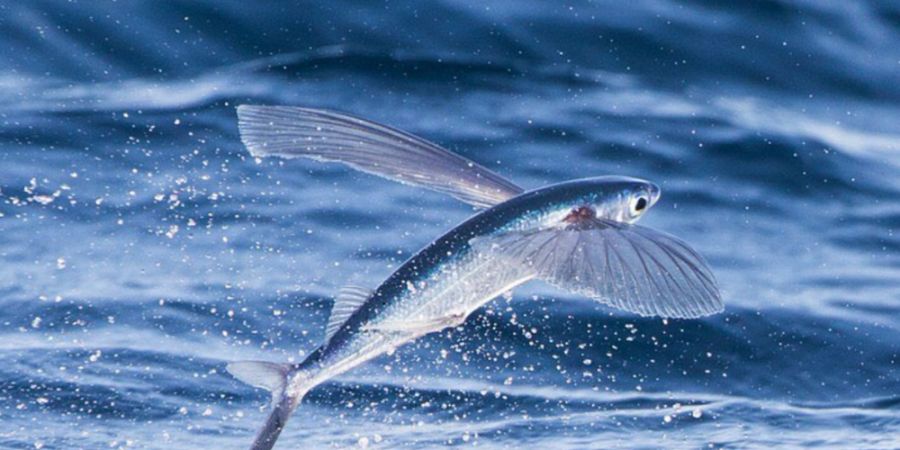

 Flying fish is a type of oceanic fish that has evolved the capacity to glide for great distances above the water's surface. There are around 60 species of flying fish, all of which are members of the Exocoetidae family. They can be found in tropical and subtropical waters throughout the world, but especially in the Atlantic, Pacific, and Indian Oceans.
Flying fish is a type of oceanic fish that has evolved the capacity to glide for great distances above the water's surface. There are around 60 species of flying fish, all of which are members of the Exocoetidae family. They can be found in tropical and subtropical waters throughout the world, but especially in the Atlantic, Pacific, and Indian Oceans.
Flying fish utilize their large, wing-like pectoral fins to raise themselves out of the water and glide through the air. They can glide for up to 200 meters (656 feet) and reach heights of up to 6 meters (20 feet) above the surface of the water. Flying fish use their gliding abilities to avoid predators like dolphins, tuna, and other larger fish.
Flying fish are a vital component of marine ecology, and they are preyed on by a range of creatures, including birds, sharks, and larger fish. Fishermen also catch them for food and to use as bait. Some flying fish species are regarded as delicacies in some cultures, particularly in Japan and other regions of East Asia.
Flying fish are intriguing creatures that have evolved a wonderful adaption that allows them to avoid danger and easily navigate the broad ocean.
Some Further Information On Flying Fish:
Flying fish have a streamlined body structure and can swim at great speeds underwater. They had a top speed of 60 kilometers per hour (37 miles per hour).
Flying fish have enormous pectoral fins that can account for up to 30% of their body size. These inflexible fins function as wings, allowing the fish to fly through the air for vast distances.
Flying fish take off by swimming swiftly near the surface of the water and then propelling themselves into the air with their powerful tail. Once airborne, they can control and direct their flight by adjusting their wings.
Some flying fish have larger wings and are more suited for long-distance gliding, while others have shorter wings and are better at maneuvering in the air.
Flying fish are capable of glide rather than continuous flight. Their flights are frequently brief, and they finally return to the sea.
Flying fish are a vital food source for many marine species, and they are frequently taken for food and as bait by humans.
Some cultures, such as the ancient Greeks, believed that flying fish was a gift from the god Apollo and incorporated them into their mythology and folklore.
Despite their capacity to float through the air, flying fish are vulnerable to pollution and habitat damage. Overfishing and climate change are also risks to their populations.
click here:
